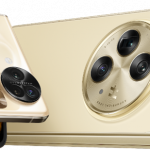AI is disrupting education. But despite what the headlines (and some ChatGPT horror stories) might suggest, South African teachers aren’t being replaced — they’re…
The difference between QLED and 4K UHD TVs


We’re looking at the difference between QLED and 4K UHD, what is the difference and which one should you opt for?
Comparing the two series is something unorthodox considering they are not directly comparable due to their overall functions.
QLED is a quantum dot display technology that generates UHD and offers a resolution of 3840 x 2160 pixels. This brings forward bright clearer images with a slightly better contrast compared to the conventional LED unit displays.
The overall choice on which to choose depends on the buyers’ preferences and their list of priorities.
If the value is on resolution, UHD may be the more suitable option, but if you value colour precision and brightness, QLED may be the more viable option.
Examples of QLED TVs come in the form of TCL’s C645 model, a compactly equipped unit meticulously crafted to deliver on performance.
It was Mike Chen the general manager at TCL South Africa who shared some insight into how important it is to understand your needs as a buyer when selecting a unit for your home.
“We believe that an informed consumer is an empowered one. QLED and 4K TVs offer unique advantages, and we want our customers to choose the TV that best suits their preferences and needs.”
Resolution and Clarity
Both QLED and 4K UHD TVs offer outstanding picture quality, but they diverge when it comes to resolution.
4K UHD TVs provide an impressive Ultra High Definition (UHD) resolution of 3840 x 2160 pixels, resulting in exceptional clarity.
QLED TVs, in contrast, employ Quantum Dot technology to enhance colour precision, making them a fantastic choice for those seeking vibrant and accurate colours.
Brightness and HDR Performance
QLED TVs are celebrated for their remarkable brightness levels and High Dynamic Range (HDR) capabilities. They excel in delivering vivid highlights and deep contrasts, ensuring that viewers enjoy every detail, even in challenging lighting conditions.
4K UHD TVs, while offering a high resolution, may not achieve the same level of brightness and HDR performance.
Viewing Angles
QLED TVs often offer wider viewing angles, preserving colour accuracy when viewed from various positions within the room.
This is particularly beneficial for households with multiple viewers watching from different angles. 4K UHD TVs may exhibit some colour distortion when viewed from extreme angles.
Energy Efficiency
Designed with energy efficiency in mind, QLED TVs allow viewers to relish stunning visuals without compromising on energy consumption.
They frequently offer an eco-friendly advantage over 4K UHD TVs, making them a sustainable choice for environmentally-conscious consumers.
Design and Aesthetics
Both QLED and 4K UHD TVs are available in aesthetically pleasing designs that seamlessly complement modern living spaces.
QLED TVs often feature sleek, slim designs with minimal bezels, adding a touch of sophistication to any room.
4K UHD TVs are also available in various attractive designs, allowing consumers to select based on their aesthetic preferences.
Also read: The future of entertainment, Apple and the Africarare move

